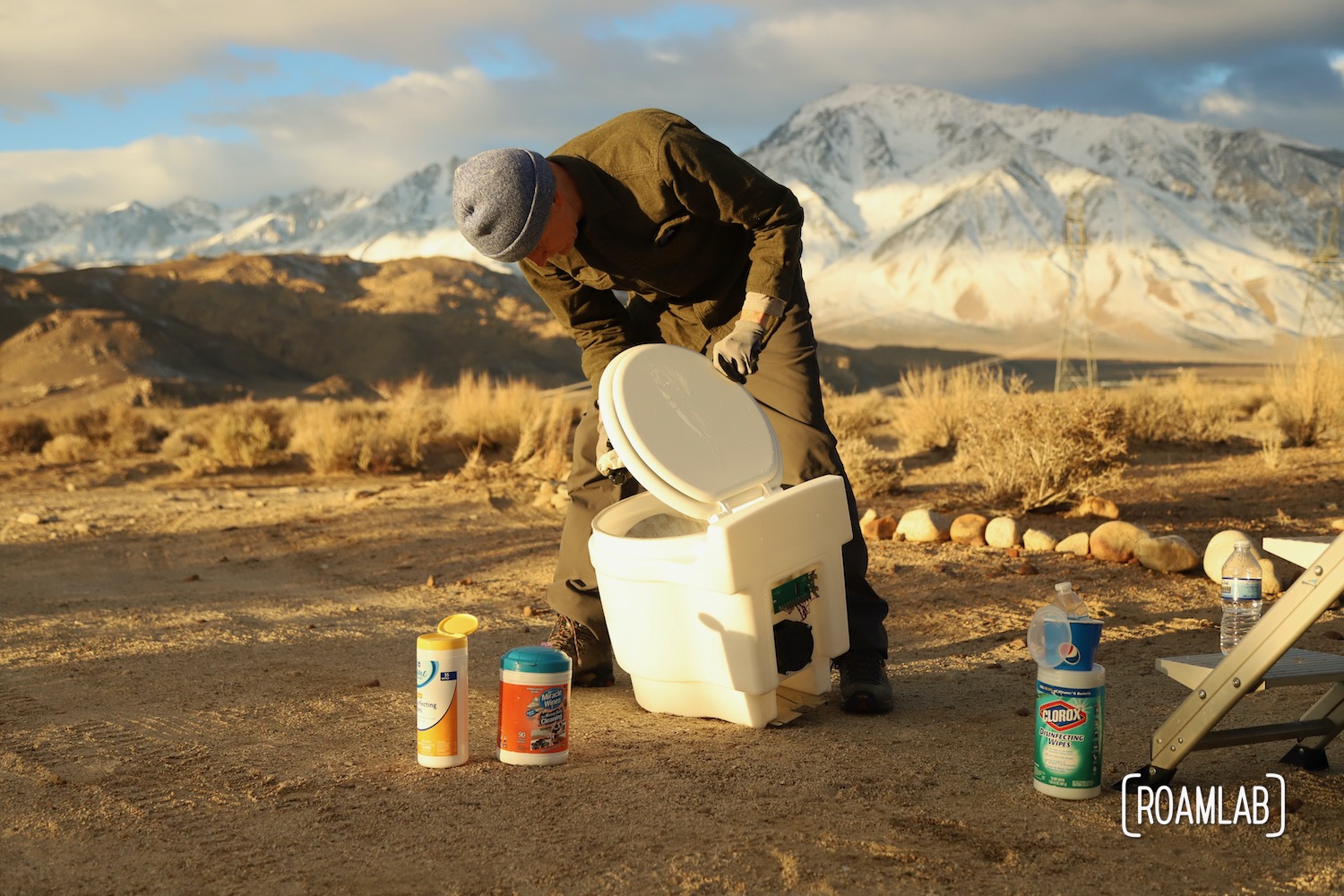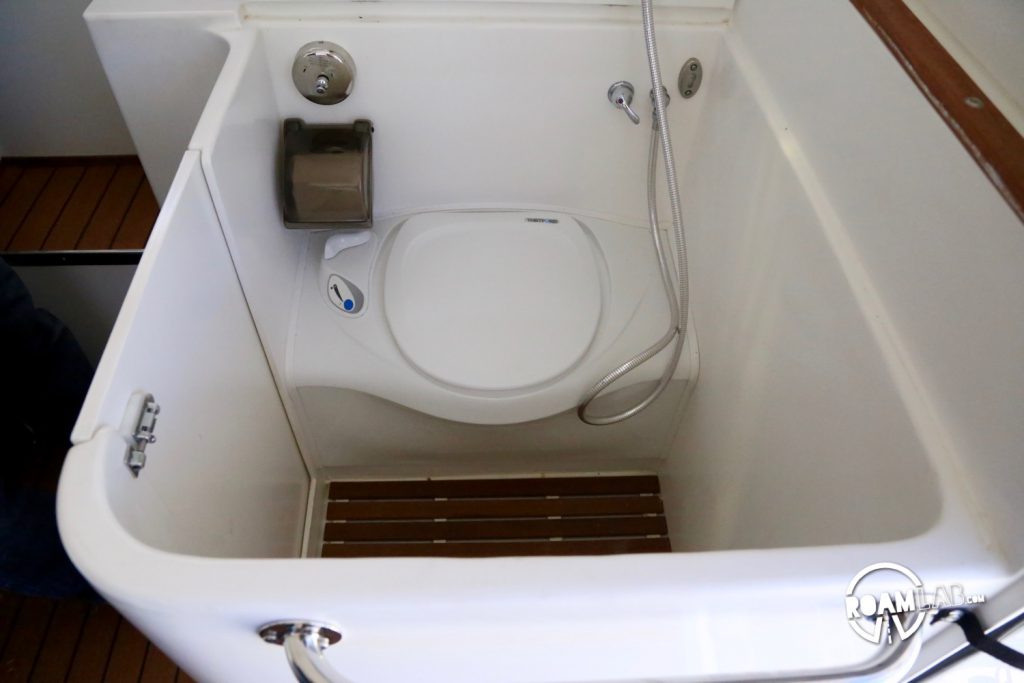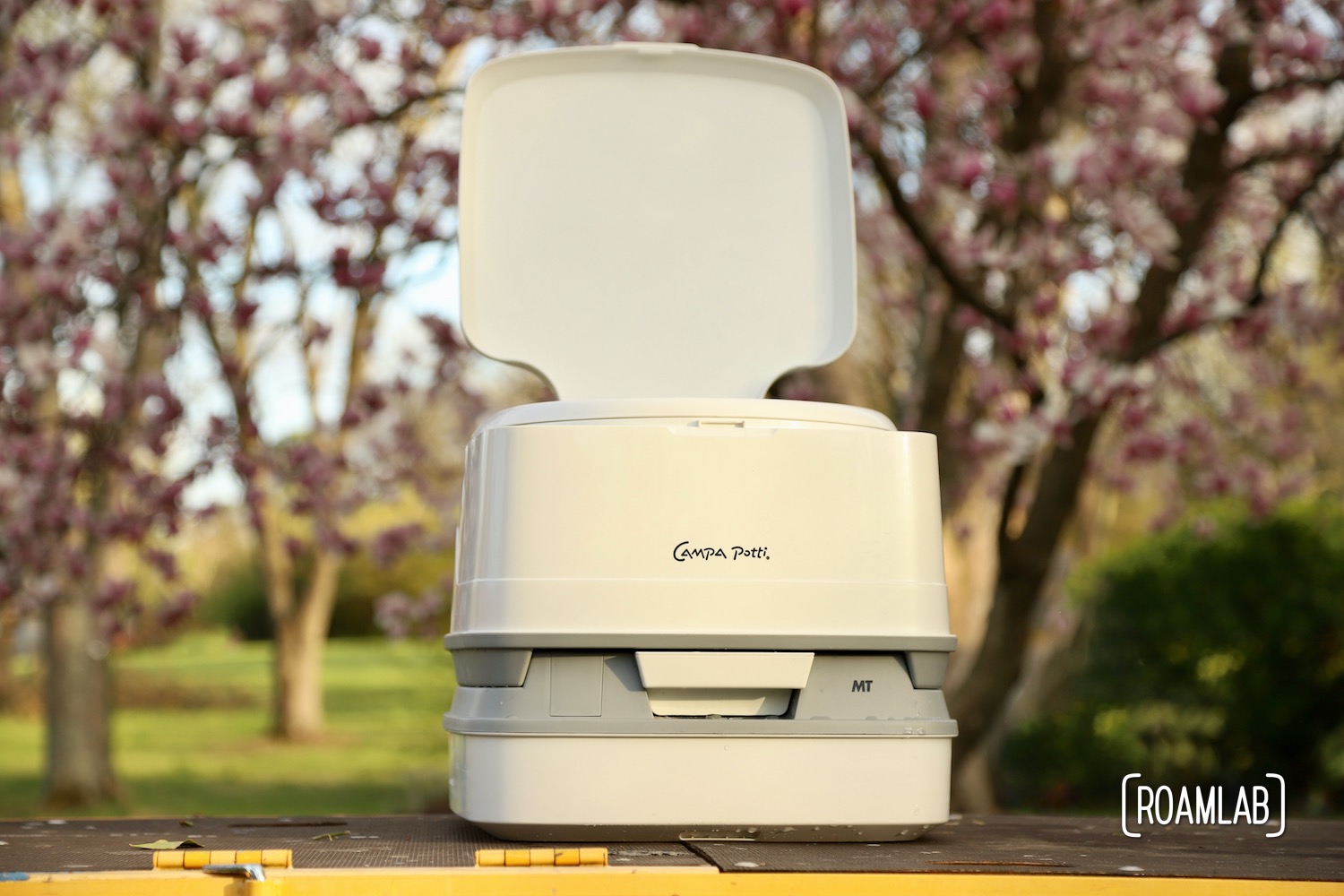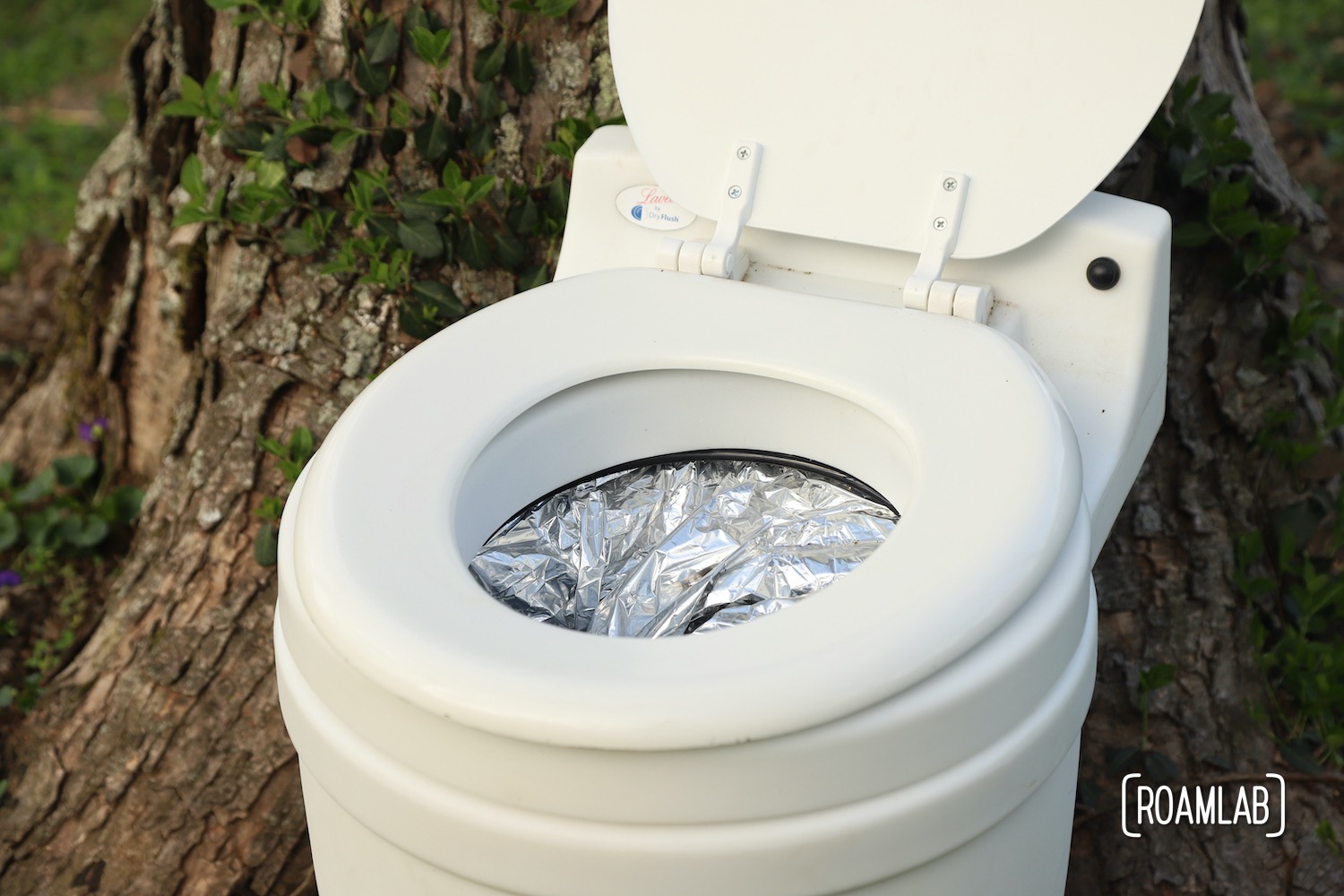
RV Toilets 101 DIY Truck Camper
If there’s one thing no one wants to have to discuss, it’s poo. Everyone does it. No one wants to deal with it. And in the RV world, that has lead to a lot of different innovations. In renovating our 1970 Avion C11 truck camper, we research and experiment with several RV toilets—trying to balance cost, convenience, and practicality. Our conclusion, like so many things in RVing, is that there is no best solution. There are only optimal solutions based on each individual’s needs. So, let’s run through the main contenders, their upsides and their downsides.

The Potty Rundown
RV toilets involve more than just your common ceramic throne. All toilets aim to isolate human waste with minimal smell and mess. In conventional sticks and bricks toilets, that involves a water flush, a u-bend to isolate potential smells, and some form of sewer or leach field connection. In the RV world, however, water is precious and a sewer connection is not always guaranteed. These constraints lead to RV toilets using little or no water to flush and incorporate storage to contain waste between dump stops. Unlike the traditional porcelain throne, most RV toilets are made of plastic or some other lightweight material. But arguably the most significant variation in toilets is the price. Depending on the model, they can easily run from under $100 to thousands of smackeroos.
While these toilets can come in dramatically different styles, with special features and applications, the key differences we really want to focus on are the questions of cost and waste storage. The former is often pretty predictable by the latter. In this, we can generally group RV toilets into 4 main types with varying popularity: standard (with a blackwater tank), cassette, composting, and incinerating. Once we can pick what type of toilet we want, the rest of the shopping experience can be much more streamlined.
Standard RV Toilets (& Black Water Tanks)
Your default RV toilet performs most of the household toilet’s common duties (flush and isolate waste) while relying on a blackwater tank to hold the waste until the RV is hooked up to a sewer. In a way, you can consider it a two-flush process: flush the toilet then the tank.
For RVers at a park with full hookups, the tanks are directly hooked up to a sewer, removing the need to flush the tanks regularly. The upside is, you don’t have to see waste exit the tank directly or worry about emptying the tanks. But these sites are generally more expensive and no matter the arrangement, at some point, someone will have to flush out that hose connecting the tank to the sewer.
Most RVs come with this type of toilet and blackwater tank already installed. Frankly, if you already have the blackwater tank and hookups in an RV, it makes sense to stick with this design unless there is a specific reason to change. After all, if the factory toilet doesn’t suit you, there’s a wide range of features that you can upgrade, such as custom toilet seats, handles, and even a variety of gravity, vacuums, and macerating flush.
Our Avion truck camper came with the standard toilet and blackwater tank installed. If not for the rotten floor requiring a full gut of the camper, we likely would have let it stay at least for a while before experimenting with alternative waste disposal options.


Cassette Toilets
Cassette toilets* have a similar design to the blackwater toilets, but waste is held in a cassette built into the toilet body. This inherently means that the holding capacity is much more limited than the built-in tanks. But these cassettes can be detached from the toilet and camper and emptied in ways outside of just the conventional sewer. For the most part, this means owners have to dump more frequently, can’t hook up directly to the sewer, but they can empty their RV at locations other than the dump, such as a public restroom. This approach appeals to RVers who are less prone to camp in conventional campgrounds and are looking for a more flexible waste disposal approach. You’ll see these on many overland rigs or as easy additions to small campers such as vans that don’t have space for large blackwater tanks.
The term cassette toilet can get a little murky. Some are typified by being mounted in the camper with a built-in door to extract the cassette without carrying it through the camper. But there are also portable toilets that have the cassette design but aren’t built into the camper. I’m grouping the two since the key feature, the holding and disposal methods, are consistent.

Composting Toilets
Composting toilets have become a very trendy alternative to the two mainstream options. These are generally aftermarket upgrades that have gotten a lot of attention thanks to social media influencers. Like the cassette toilets, waste is held in a reservoir built into the toilet—the how is what differentiates it. Liquid waste is separated from solid and collected in a tank for easy and regular disposal. Since urine is sterile, there is minimal trouble with disposal beyond smell concerns. Meanwhile, solid waste is blended with peat moss. The idea is for the solid waste to composite with the peat moss. A built-in fan circulates air around the composting material and out the camper
Granted, calling this a composting toilet can be a bit of a misnomer. The toilet can start the composting process, but the waste generally takes 3-weeks to break down to technically count as compost. For seasonal campers, you could achieve the conventional composting process by waiting three weeks after a vacation before emptying the toilet. But, for full-time RVers, this isn’t really practical. So the peat moss and waste are generally prematurely removed and sequestered.
Composting toilets are trendy because they are considered environmentally friendly and abstract the processing of waste. On the downside, they are shockingly expensive. Composting toilets from the two major brands, Natures Head and Air Head, will easily cost somewhere in the ballpark of a grand. That said, it’s a pretty simple design that we have considered experimenting with. But that’s for a future article.
Incinerating Toilets
Incinerating toilets are a much more niche toilet because they consume what campers generally treat as a very limited resource: energy. As the name would suggest, incinerating toilets heat waste to break it down rather than holding it in a tank. The process is generally energy-intensive, and, like the composting toilets, the equipment is costly. So these only appear in very specialized and expensive rigs. We have heard some complaints about strong odors from the incinerating process, but we don’t have a strong read on how these compare to the smells often encountered when emptying black water or cassette tanks. And we aren’t yet to a point where we are ready to shell out the cash and try ourselves.
Other Toilet Options
Of course, this rundown is far from comprehensive. There’s always the classic DIY shovel alternative of digging and outdoor latrine or the 5-gallon lined bucket with optional upgrades of a toilet seat and or kittle litter. The commercial market also offers double-sealed wagg bags with desiccant for single-use situations. For those history buffs, we also dug up records of past RV toilets that as to use a truck tailpipe to incinerate waste.
New and classic alternatives are out there to be uncovered. And we have tried our fair share.
Our Personal Experience
In the early days of our travels, we avoided the problem of waste disposal by not having a toilet. We would always camp at locations with toilets, anything from pit toilets or 24-hour Walmarts. Of course, that comes with its own inconveniences. There are a lot of camping opportunities that do not include toilets. And once we discovered boondocking, we needed a toilet. So, we bought a Thetford Campa Potti: a portable cassette toilet. The experience is…less than ideal.
Was there an option that didn’t involve waste splashing around? Enter Laveo by Dry Flush. Their dry flush cartridges meant that, once flushed, you never had to see the waste again. But that’s only the case if the Laveo flushes. And after less than a year, we were having problems.
Where are we now? We are back with the Thetford. Sure, disposal can be messy, but the simple design is reliable. It’s not our long-term solution, but it has us back to thinking that a more fully-featured cassette toilet may be our ultimate choice.


Conclusions
There’s a reason why the black water tank remains the most common option. It’s relatively cheap. And, for most RVers who only use their RVs seasonally, that’s a primary consideration. For full-timers who stay for extended periods at parks with full hookups, the tank also makes sense. Investing in an alternative waste process is only called for in cases where there isn’t already infrastructure for a conventional RV toilet or specialized RVing use cases…or if money really isn’t the issue.
It does feel like the adoption of composting toilets has less to do with practicality and more to do with signaling and a general desire to abstract any contact with one’s own waste. Composting toilets can be more environmentally friendly, but that is debatable based on its use. Any time we mention toilets, the composting contingency is loud and proud. I don’t mean to dismiss composting toilets. In the long run, we’ll probably use one, at least for a while. But I think their advocates are a little too quick to present them as the singular and optimal solution.
Instead, we keep finding ourselves flirting with cassette toilets. They are messy and imperfect but also simple in their design and generally reliable. In terms of balancing cost vs. convenience, there is a reason why these are a popular alternative to tanks and hoses.
As I put forward in the beginning: this is completely contextual. What works best for one person is not necessarily best for others. When in doubt, though, I’d advise starting with a cheap baseline cassette toilet. Thetford Campa Potties are easily found at most outdoor retailers and run a little under $100. An order of magnitude less than your standard composting toilet and much simpler to use than most other alternatives. It’s a relatively low-cost entry point to distinguish your own perceptions from reality.





Grif
Since you guys have done so much beautiful rivet work I wonder if you considered an external access cartridge system. Big risk I guess but it seems like the Canadians and Europeans have worked out the kinks on a few.
I’d love to dump those hose deal and switch to a nice cassette. Not sure what the longest reasonable boondock is though for a family of three, once you go that route.
Looking at adding an under frame ASME propane tank for Generator and waterfall heater so I may explorr incineration! Thanks for another great writeup! Happy trails!
Grif
Lexi
Yeah, I do kinda like the idea of an external cassette hatch. It certainly could cut back on any potential messes inside of the camper. That said, we have yet to encounter a cartridge system with an anodized aluminum hatch. So it introduces the issue of either having some conspicuously colored hatch by the manufacturer or having to retrofit our own. It’s something we have considered but an unwelcome complication.
It sounds like you have some fun projects ahead of you, and I’m glad you liked the write-up.
Happy trails to you as well,
Lexi & Chris